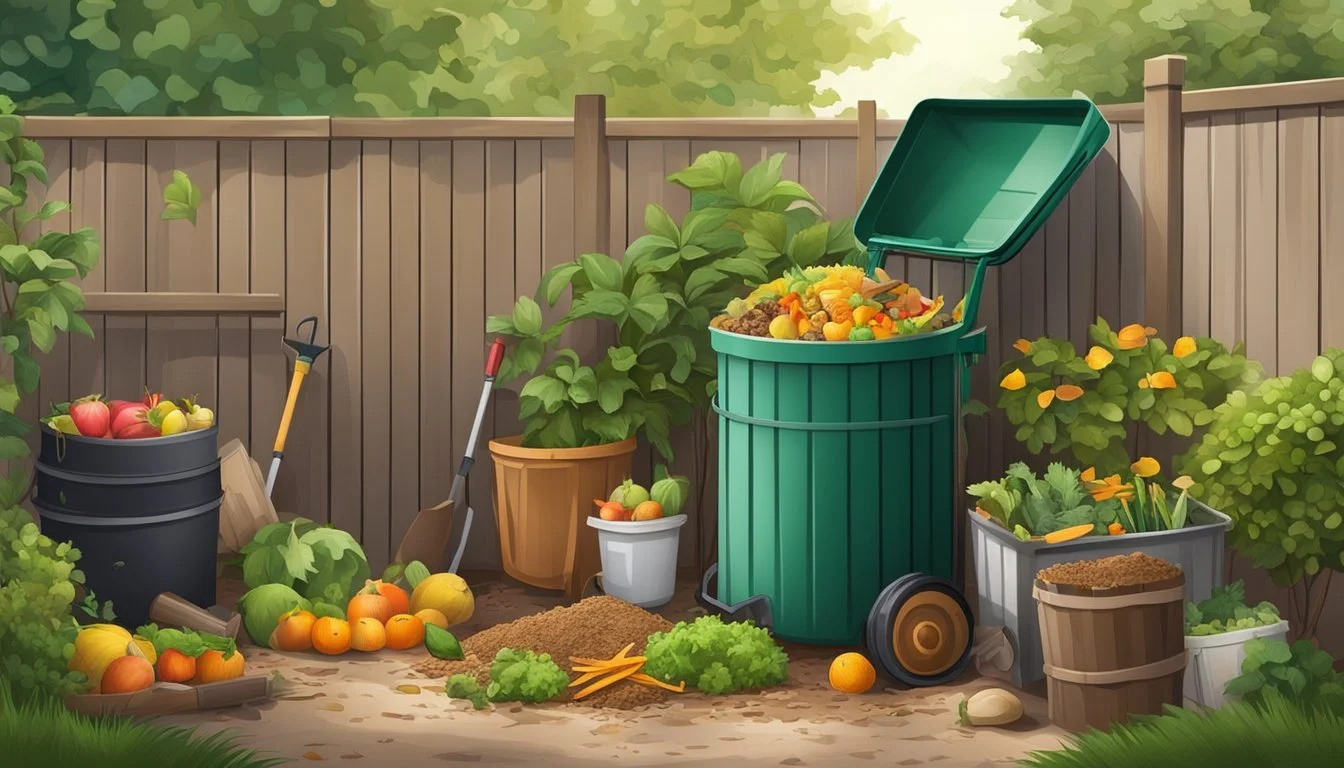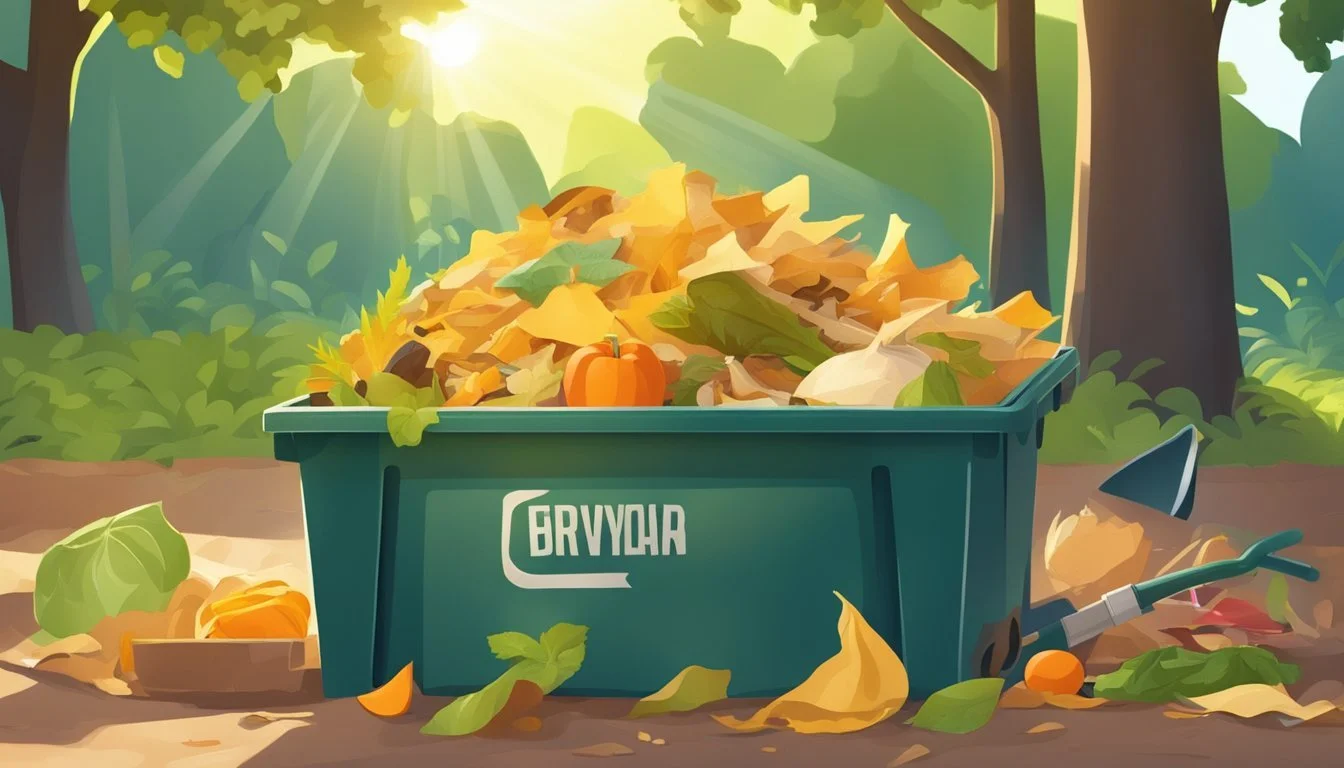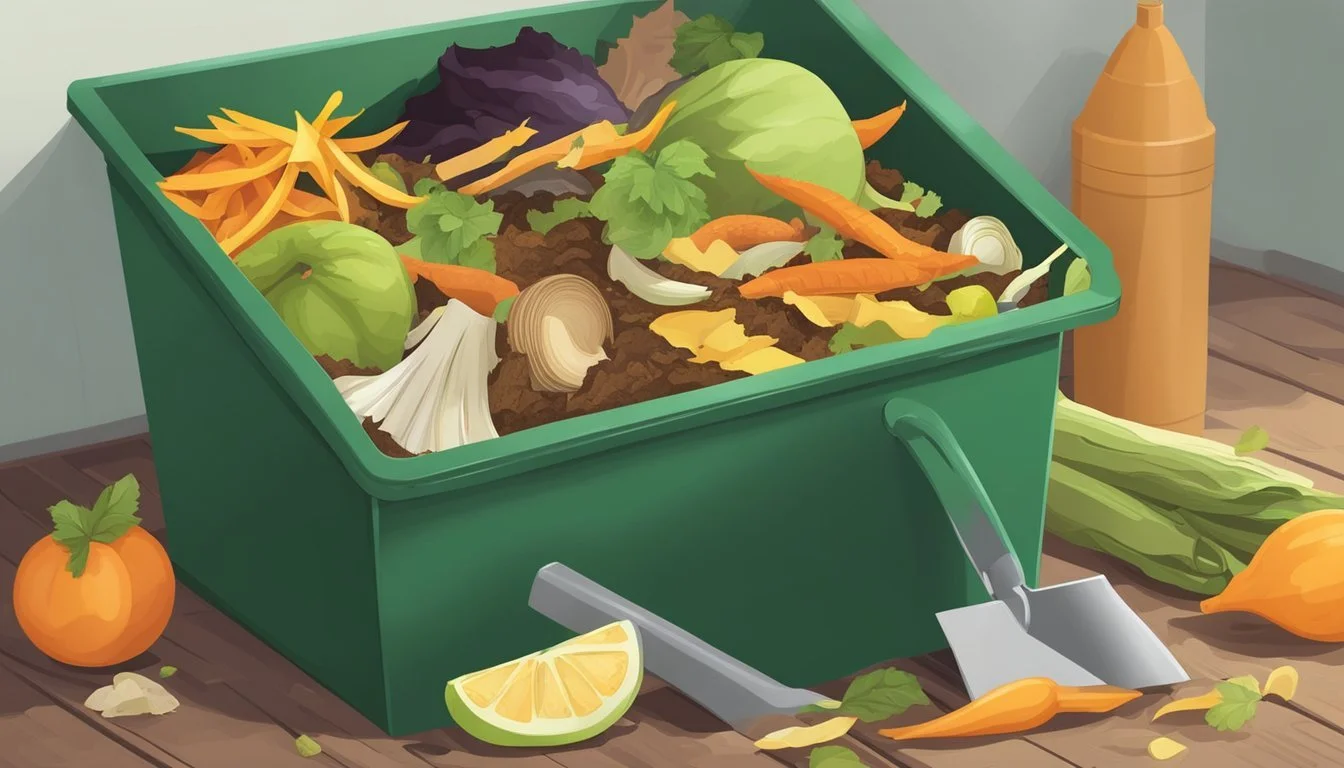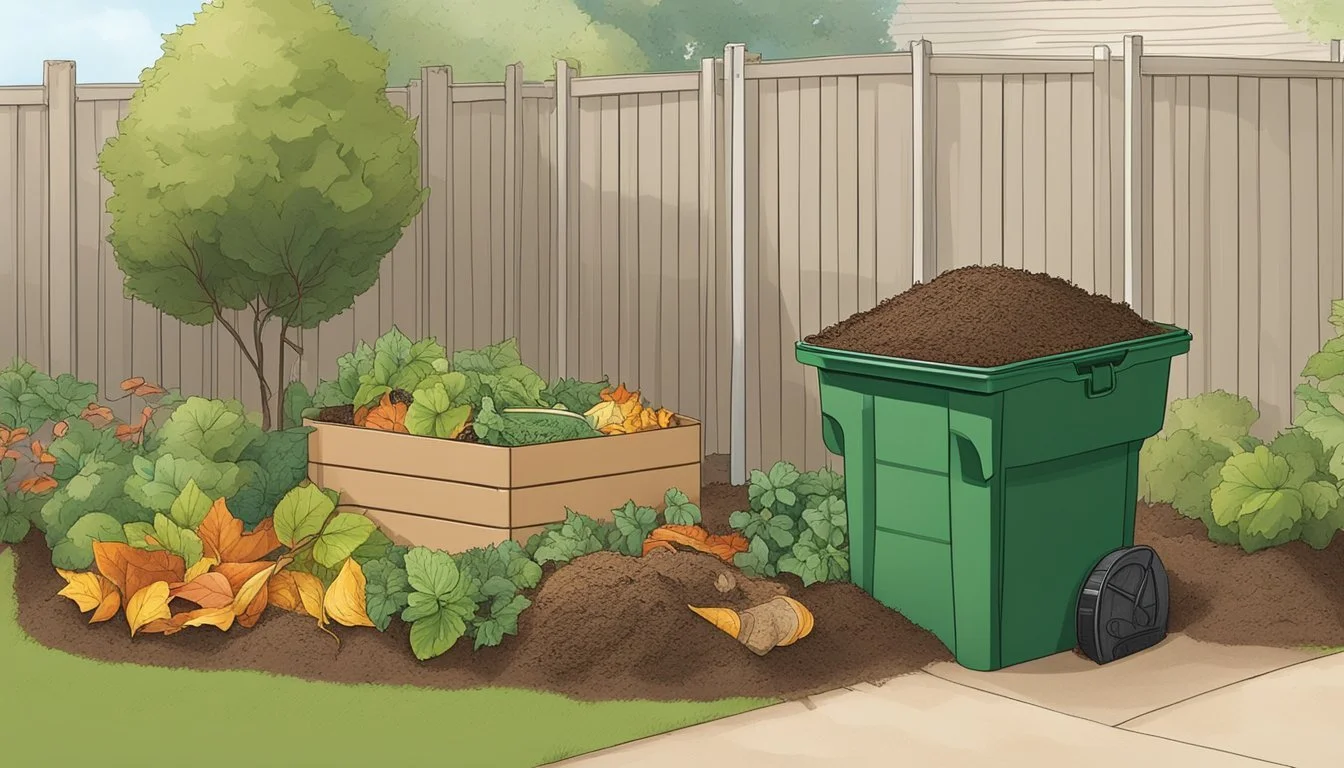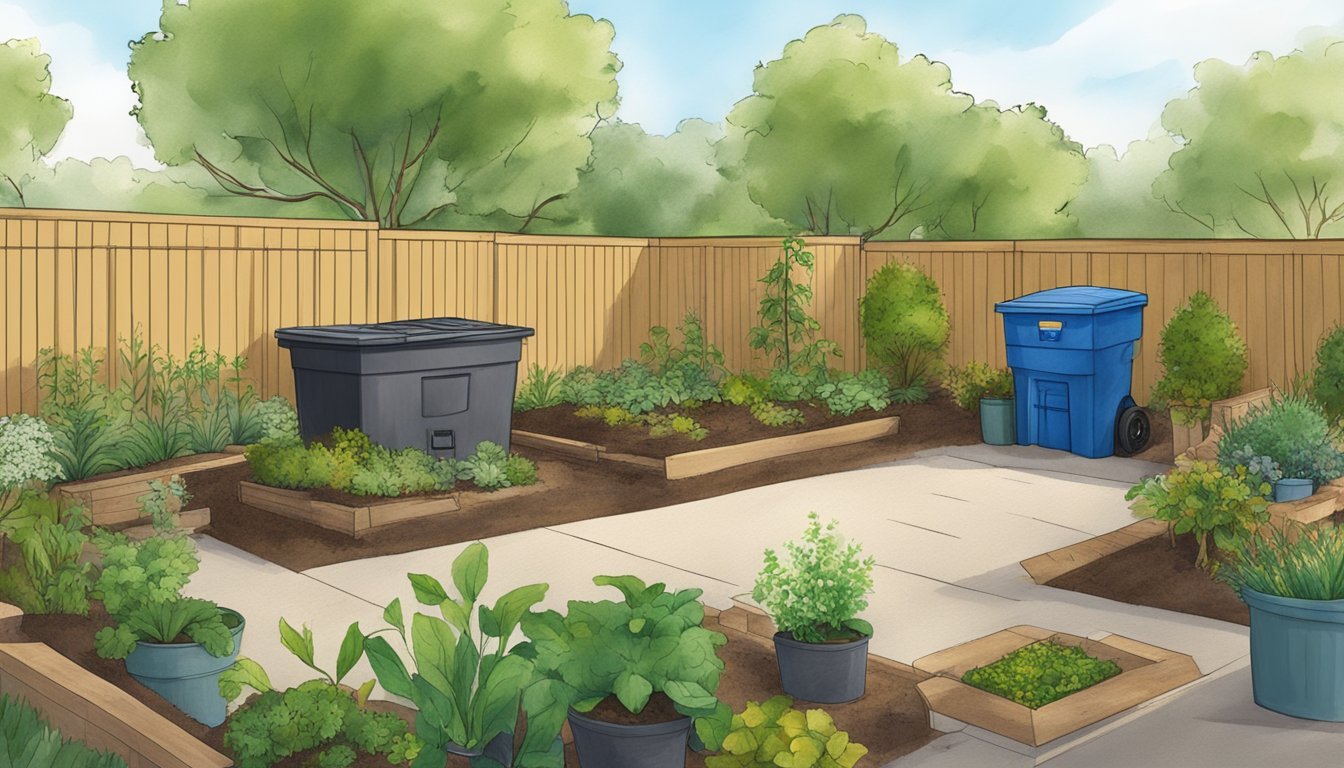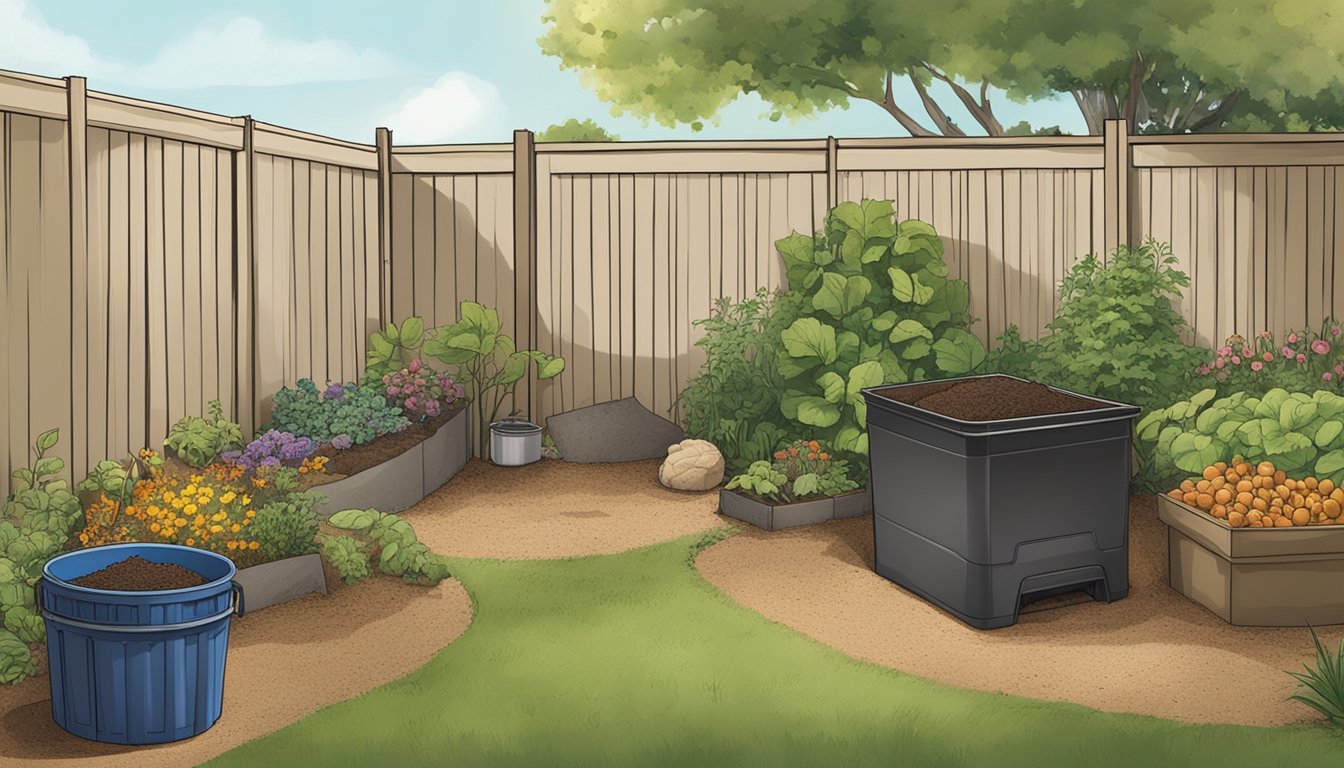Guide to Composting in Round Rock, TX
Essential Tips for Beginners
Composting in Round Rock, TX, is an eco-conscious effort that aligns with Austin's ambitious zero waste goal, aiming to slash the amount of trash heading to landfills by 90% by 2040. By transforming kitchen scraps and yard waste into compost, residents contribute to a substantial reduction in greenhouse gases and make a positive impact on natural resource conservation. Composting not only enriches the soil, fostering a healthier garden environment, but also plays a critical role in the city's recycling initiatives, diverting a significant portion of waste that would otherwise contribute to the mounting landfill problem.
In the heart of Texas, Round Rock citizens have access to information and resources to make composting straightforward and effective. Whether operating a simple backyard pile, using a compost bin, or participating in local composting services, residents have various options to suit their lifestyles and space considerations. The practice is embraced across the community, becoming an integral part of the city's identity in environmental stewardship.
For those looking to join the composting movement in Round Rock, understanding the basics is crucial. Proper composting techniques ensure that organic waste is converted into valuable compost, avoiding common pitfalls such as unpleasant odors or pest attraction. The process, widely supported by the community, demonstrates a city-wide commitment to sustainability and provides a model for other cities to follow in waste reduction and recycling efforts.
Benefits of Composting
Composting offers multifaceted advantages, from enhancing soil quality in home gardens to reducing environmental footprints on a larger scale.
For Home Gardeners
Compost serves as a powerful amendment for home gardens, providing a rich source of nutrients that helps flowers and vegetables thrive. Through the natural decomposition of organic materials, a compost pile transforms kitchen scraps and yard waste into a biologically-stable mulch. The end result is a nutrient-rich soil that fosters robust plant growth while helping to save money on commercial fertilizers. Compost not only improves soil structure but also stabilizes pH levels and enhances the soil's ability to retain water. It can also loosen tightly bound particles in dense soil types, ensuring that roots have the room to spread and adequate air and water can penetrate.
Environmental Advantages
Recycling organic waste into compost is a practical approach to achieving a zero waste lifestyle, mitigating the strain on overburdened landfills. Utilizing compost reduces reliance on chemical-heavy fertilizers, thus conserving natural resources and preventing the leaching of synthetic substances into waterways. With organic waste decomposition within landfills being a significant producer of methane, a potent greenhouse gas, composting plays a crucial role in reducing this emissions source. Composting's impact extends to combating soil erosion, as it enhances the land's resilience against water and wind. This process helps to build healthier ecosystems and contributes to the sustainable management of organic waste.
Composting Basics
In Round Rock, TX, successful composting hinges on balancing organic materials, moisture, and aeration to facilitate decomposition by microorganisms.
Understanding Compost Ingredients
The key ingredients for compost are nitrogen-rich greens and carbon-rich browns. Nitrogen-rich greens include food scraps, yard trimmings, and coffee grounds. They provide the necessary proteins and amino acids for microorganisms. On the other hand, carbon-rich browns involve items such as leaves, cardboard, and straw, supplying the energy source for these microbes. A common guideline from the Take Care of Texas initiative suggests maintaining a 3:1 ratio of browns to greens to ensure a balanced compost.
Greens (Nitrogen-rich) Browns (Carbon-rich) Grass clippings Dry leaves Vegetable and fruit waste Cardboard strips Coffee grounds Straw and hay Plant trimmings Sawdust (from untreated wood)
The Composting Process
The composting process is an aerobic one, requiring oxygen to assist the microorganisms in breaking down the materials. Turning the pile adds air; structures like hollow pipes can be added to promote airflow as advised by The Old Farmer's Almanac. It's essential to keep the pile as moist as the consistency of a damp sponge. Heat is naturally generated during decomposition, which further accelerates the process. Regular turning and maintaining the pile’s moisture are fundamental steps in efficient composting.
Setting Up Your Compost
Setting up your compost system efficiently is pivotal. One must choose the right location, select an appropriate container, and understand how to build the compost pile to create a conducive environment for decomposition.
Choosing the Right Location
Selecting an optimal location for your composting area is crucial. It should be a flat, well-drained area that receives ample sunlight to maximize heat absorption. The location should also have easy access to water to maintain the necessary moisture levels of the compost pile, which is essential for decomposition.
Selecting a Compost Bin or Tumbler
When it comes to containers, a compost bin or tumbler is an efficient choice for yard care enthusiasts in Round Rock, TX. The selection depends on the size of your yard and the volume of organic waste produced. A compost bin is stationary and can accommodate a larger volume of material, while a tumbler provides aeration by turning and is a relatively mess-free option. Both should have a cover to regulate moisture and prevent animals from disturbing the pile.
Building a Compost Pile
To build a compost pile, start by layering browns (carbon-rich materials like leaves and twigs) and greens (nitrogen-rich materials like kitchen scraps and lawn clippings), aiming for a ratio of about 3:1 of browns to greens. Each layer should be a few inches thick and alternated. One should water each layer before adding the next, ensuring the pile is as moist as a wrung-out sponge. As decomposition progresses, the center of the pile will generate heat, indicating that the composting process is active. Regular aeration and turning of the pile will help maintain the composting process.
What to Compost
Composting is an effective method of recycling organic matter into a rich soil amendment that benefits garden plants and the environment. The success of composting depends on balancing two types of materials: green nitrogen-rich items and brown carbon-rich items, while avoiding certain materials that can disrupt the composting process or introduce harmful pathogens or chemicals.
Green Materials
Green materials provide necessary nitrogen to the compost mix and help to heat up the compost pile as they break down. They are typically moist and soft in texture:
Food Waste: Vegetable scraps, fruit peels, and coffee grounds.
Yard Trimmings: Fresh grass clippings and green leaves.
Paper Products: Unbleached paper napkins and paper bags (shredded).
Brown Materials
Brown materials add carbon to your compost, create aeration gaps, and give structure to the pile:
Leaves: Dry leaves, which can be collected in autumn and stored for year-round use.
Straw and Sawdust: Straw and sawdust from untreated wood can be sprinkled in thin layers.
Woody Materials: Small branches, twigs, and wood chips to improve aeration.
Items to Avoid
Some items should be excluded from compost to prevent attracting pests, causing foul odors, or spreading disease:
Meat, Bones, and Fat: These can attract pests and cause odors.
Dairy Products: Similar to meats, dairy products can attract pests and create odor problems.
Pet Waste: Dog and cat waste can harbor diseases and should never be included in compost.
Plastic and Synthetic Materials: These do not break down and can contaminate your compost.
Maintaining Your Compost
In Round Rock, Texas, where gardening is a popular hobby, maintaining your compost is key to creating rich, nutritious soil. Effective management involves ensuring proper aeration, moisture balance, and regular monitoring of the composting process.
Aeration and Turning
Aeration is crucial for the composting process, as it helps supply oxygen that microorganisms need to break down organic materials. Without adequate oxygen, your compost pile can become anaerobic, which slows down decomposition and can cause unpleasant odors. Methods to aerate the pile include turning it with a pitchfork or using a compost tumbler that can be easily spun. For a traditional compost pile, one should integrate aeration by turning it every 7-14 days depending on the size and contents of the pile.
Tools for Turning: Pitchfork, shovel, or compost aerator tool.
Frequency: Once weekly to biweekly, depending on pile conditions.
Moisture and Cover
Moisture is as important as air in the composting process. The material should feel like a wrung-out sponge, moist but not dripping wet. If the compost is too dry, microorganisms won't be able to do their job effectively. Conversely, too much water will suffocate the pile, reducing oxygen levels and cooling the heat necessary for composting. A cover can be used to protect from excessive rain or to help retain moisture during dry spells. It is essential to check the moisture levels regularly and adjust as needed.
Moisture Level: Consistency of a damp sponge.
Covering Materials: Tarp, wood, or plastic sheeting.
Monitoring the Composting Process
Regular monitoring is key in identifying whether your compost pile is functioning optimally. You should check for a good balance between green materials (nitrogen-rich “greens” like vegetable scraps) and brown materials (carbon-rich “browns” like dry leaves), as well as ensure that the pile is generating enough heat to facilitate the breakdown of materials. An imbalance can lead to a stagnant pile. If managed well, the pile will produce compost tea, a nutrient-rich liquid that benefits the garden.
Temperature: Warm to the touch indicates microbial activity.
Odors: Should be earthy, not sour or putrid.
Through proper aeration, moisture control, and vigilant monitoring, one can maintain a healthy compost system and contribute to a greener Round Rock, TX.
Troubleshooting Common Issues
In Round Rock, TX, maintaining optimal compost conditions can prevent common problems such as unpleasant odors and pest infestations. This guide offers strategies to effectively manage these issues.
Managing Odors
Odors typically signal an imbalance in the compost's carbon-to-nitrogen ratio or a lack of oxygen. To mitigate odors:
Add Browns: Integration of carbon-rich materials, like dry leaves or shredded newspaper, can help balance the compost and eliminate foul smells.
Aerate Regularly: Turning the compost ensures even distribution of oxygen, accelerating decomposition and reducing the risk of methane buildup.
In cases of excess moisture, the compost pile should be protected from the rain and additional dry browns should be mixed in to restore the correct moisture levels.
Controlling Pests
Pests are attracted to compost for its abundant sources of food. To keep them at bay:
Secure the Pile: Implement barriers such as fencing or an enclosed bin to deter rodents and other pests.
Proper Material Selection: Avoid adding food items like meats, dairy, or oils, which are more likely to attract pests.
Maintain Cover: A layer of soil or mulch over the compost can mask odors that attract pests and enhance the organic matter breakdown.
Regular inspection for and removal of incorrectly added items can greatly reduce the risk of pest problems.
Using Your Finished Compost
Once your compost has matured into a nutrient-rich soil amendment, it becomes a versatile tool to enhance your garden and landscaping. In Round Rock, TX, utilizing finished compost can stimulate plant growth, improve soil structure, and help retain moisture in the hot Texas climate.
Gardening with Compost
Incorporating finished compost into your garden beds boosts the soil's overall health. By blending compost into the topsoil, you ensure that essential nutrients necessary for plant vitality are readily available. For new flower beds or vegetable gardens, one can work the compost into the soil at a ratio of 1:3 (compost to soil), providing a fertile foundation for flowers and produce to flourish.
Compost as Mulch
Applying compost as mulch around your trees and within flower beds serves multiple purposes. It suppresses weed growth, retains soil moisture, and gradually breaks down to add organic materials back into the soil. A layer of 2-3 inches of compost around plants will not only enhance the aesthetic of your landscape but also reduce the need for chemical fertilizers.
Compost Tea
Compost tea is an aerated solution rich in nutrients that can be used as a foliar spray or soil drench. To prepare, steep well-aged compost in water, allowing the soluble nutrients to infuse into the liquid. This compost tea can then be applied directly onto the leaves for a quick nutritional boost or poured around the base of the plants to improve root health and development.
Advanced Composting Techniques
Advancing beyond basic composting requires a deep understanding of organic waste transformation. These sophisticated methodologies cater to enthusiasts aiming to optimize their composting efforts and contribute more significantly to soil health.
Vermicomposting
Vermicomposting capitalizes on the natural digestion process of earthworms to break down organic waste. This method is highly efficient, requiring minimal space and yielding nutrient-rich compost. The worms consume kitchen scraps and bedding materials, excreting castings that enrich the soil with beneficial bacteria and nutrients.
Bokashi Composting
In contrast to the slow decomposition process of traditional composting, Bokashi composting is a rapid technique using a specific group of microorganisms to ferment organic waste, including meat and dairy, that are typically not recommended for standard compost piles. This method produces a pre-compost material that can then be completed in a soil system.
Community-Scale Composting
Community-scale composting is an initiative often undertaken by a group or local government to manage organic waste on a large scale. It involves collecting yard trimmings, food scraps, and other biodegradable materials from the community and processing them at a commercial composting facility. Such facilities utilize high temperatures to ensure rapid decomposition and pathogen elimination, turning large quantities of organic matter into valuable compost for communal use.
Composting Regulations in Round Rock
Composting in Round Rock, Texas, falls under both state and local regulations designed to facilitate environmentally responsible yard care and recycling of organic waste. The Texas Commission on Environmental Quality (TCEQ) mandates certain general and air quality requirements (directives found at the TCEQ website) that must be followed by any facility or individual engaging in composting activities.
Facility Requirements:
Permitting: Facilities must obtain proper authorization to operate, ensuring compliance with state regulations.
Operations: Composting must be conducted in a way that prevents pollution of surface water and adheres to air quality standards.
In Round Rock, composting practices, especially for large-scale operations, should align closely with the guidelines provided by Austin's Curbside Composting Collection, given the city's proximity. These practices not only optimize organic waste diversion but also provide a blueprint for effective yard care recycling and compost use.
Local Guidelines for Residents:
Curbside Collection: Residents must place their composting cart at the curb by 5:30 a.m. on collection day and follow specific placement instructions to facilitate automated collection.
Participation: They are encouraged to participate in composting programs that support organic waste recycling.
The city of Round Rock encourages its residents to understand and comply with these regulations to sustain a healthy, clean, and green community. Through adherence to these rules, Round Rock continues to support environmentally sound waste management and promotes the creation of nutrient-rich soil amendments for landscaping and gardening.
Quick Tips for Round Rock Residents
When it comes to green waste, Round Rock residents have several options to manage their compost and yard care sustainably. Below are practical steps to minimize landfill waste and enhance their own gardens:
Kickstart Your Compost Pile: Begin by selecting a suitable spot in your yard that's flat, well-drained, and sunny. A successful compost pile requires a balance of green (nitrogen-rich) and brown (carbon-rich) materials. Alternate layers of kitchen scraps, yard trimmings, and shredded paper for best results.
Guide to Yard Care: Mulch generously to retain soil moisture and suppress weeds. Grasscycling, leaving grass clippings on the lawn after mowing, provides nutrients and diminishes the need for chemical fertilizers.
Curbside Collection: Stay informed about the curbside composting collection service in Austin which accepts food scraps, yard trimmings, and even bones or dairy that can't go in a backyard compost.
Brush Recycling: Take advantage of the brush recycling opportunities offered by the city. Round Rock residents can also obtain free mulch from the Brush Recycling Center.
Reduce and Reuse: To prevent waste, think about ways to reduce yard waste by choosing low-maintenance plants and composting. Repurpose yard waste as much as possible before considering disposal.
Residents contribute to a sustainable environment by mindfully managing yard waste and utilizing composting services, keeping valuable organic materials out of landfills.

